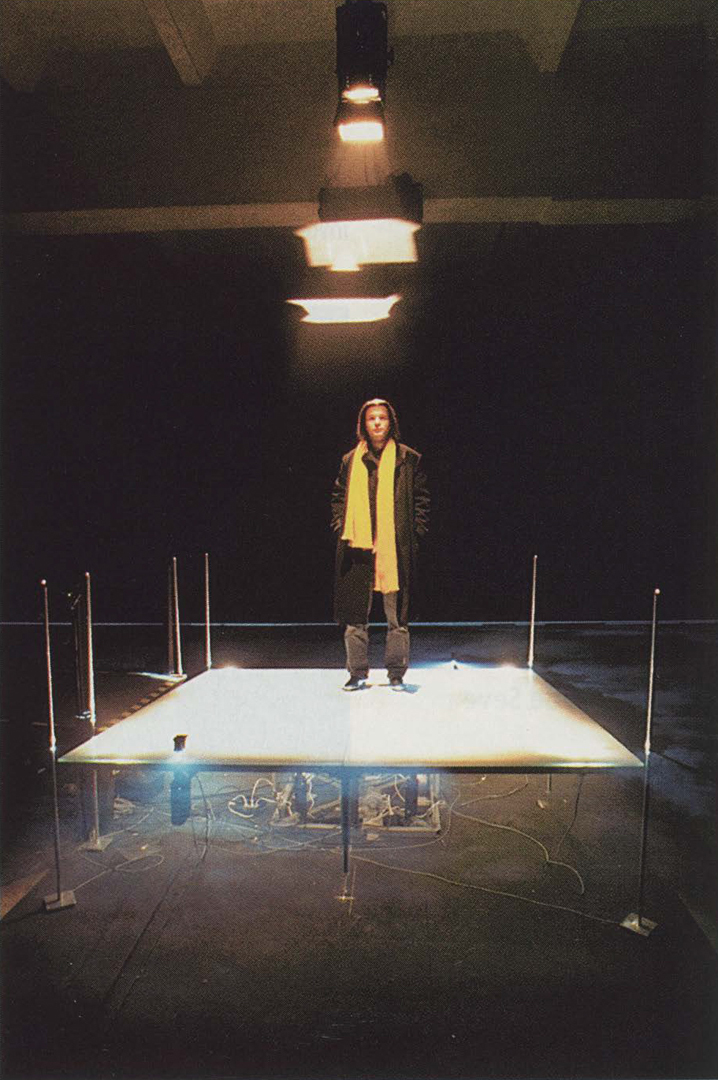Christian Möller: Virtual Cage
Artist(s):
Title:
- Virtual Cage
Exhibition:
Category:
Artist Statement:
The tactile becomes visible, the visible becomes audible, and the acoustic visible. Interactive architecture “conveys” impressions in another sense dimension: what is cast into question and becomes an object of playful development is the medium in which things appear to us.
The Virtual Cage is an installation intended to describe an architectonic space by means of a computer-controlled multi-channel audio system.
A glass platform that the viewer can walk across is located at the center of the installation. The platform is 2.5 by 2.5 meters in surface area. The glass components are mounted on a mobile, hydraulically cushioned steel structure. Two optical angle decoders, mechanically translated into the installation’s two horizontal axes, transmit the platform’s respective position to an IRIS Indigo workstation- it is continually tilted back and forth by the viewer’s movements. The platform is surrounded by a five-channel audio-system, with four loudspeakers positioned in the installation’s corners and one suspended directly over the middle o f the platform. If one imagines there to be lines connecting the speakers and the floor of the installation then one is essentially imagining a wire model in the form of a cube: the “Virtual Cage.”
This cage is filled with a swarm of individual dots that obey the laws of gravity and move around in space according to the tilted angle of the platform. The swarm-like being that gives diversified in it’s complex structure in the moment of maximum closeness to the viewer. This effect is made up by fading a second sample sequence into the sound. Via a midi-mixer the computer steers the sound in space. The viewer thus experiences acoustically the dimensions and the limits of the space surrounding him or her and which is otherwise invisible and therefore not accessible to perception.
Contributors:
David Dunn, U.Su., –Natural Sound (Insects)
Peter Kuhlmann, Germany– Composition and Audiotechnology
Gideon May, Netherlands– Programming
Daniel Schmidt, Germany
TAT Frankfurt, Germany
Other Information:
This project was made possible by the friendly assistance provided by MBM Metallbau Möckmühl GmbH.





